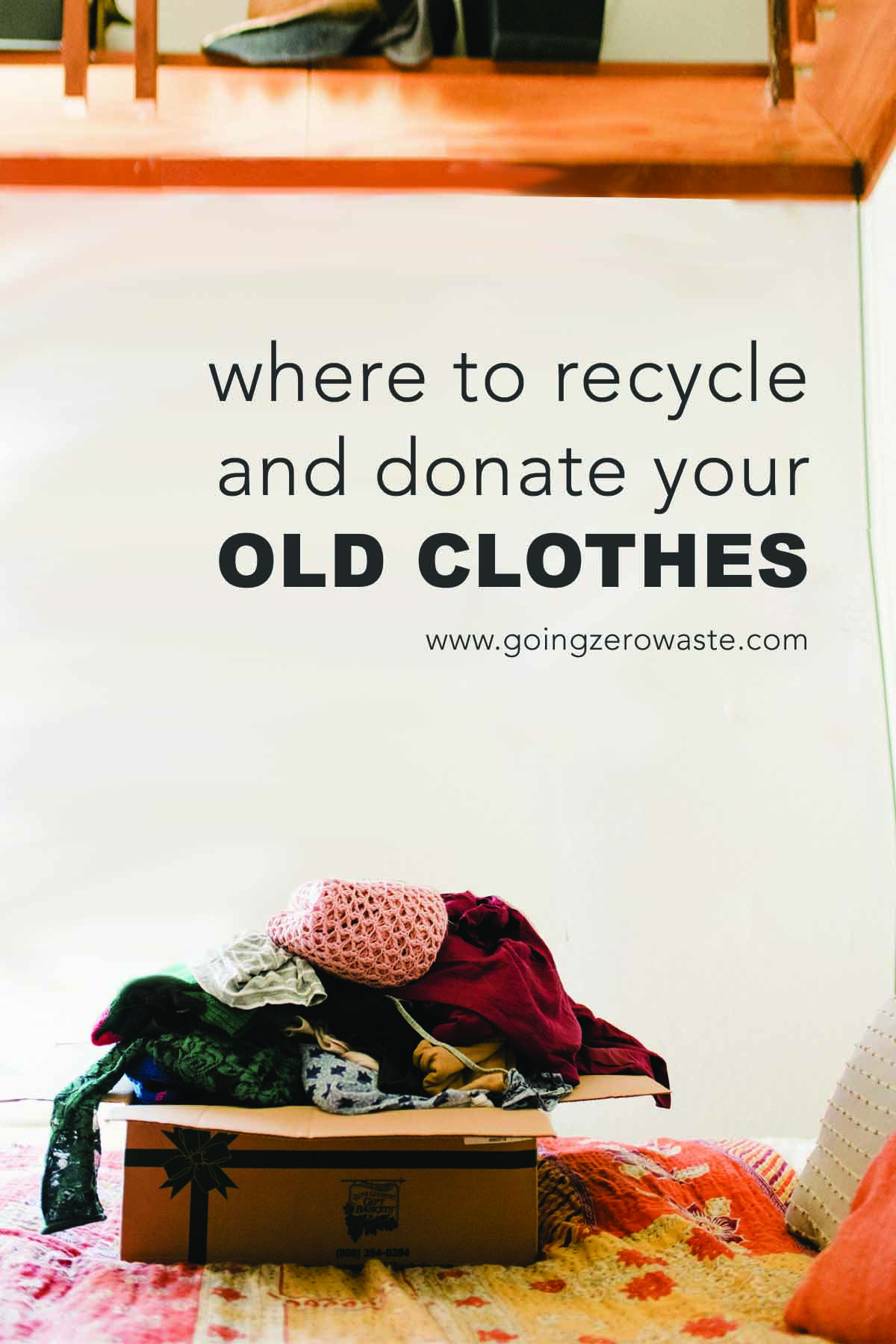When you look up zero waste, you’re bound to notice tons and tons of pictures of glass jars everywhere. From the trash jar to the jars lining our pantries, glass is pretty popular in the zero waste community.
But what’s our obsession with glass? Is it really so much better for the environment than plastic?
Plastic tends to get a really bad rep from environmentalists – that's got a lot to do with the fact only 9 percent of it is recycled. That said, there’s so much more to think about in terms of what goes into manufacturing and recycling both glass and plastic, not to mention its afterlife.
Which is truly the eco-friendliest choice when you get down to it, glass or plastic? Well, perhaps the answer isn’t as clear cut as you may think.
glass:
Let's start by analyzing every zero waster’s beloved material: Glass.
First, it’s important to note that glass is endlessly recyclable, back to its original use. It never loses its quality and purity, no matter how many times it’s recycled…. but is it actually being recycled?
problems with glass:
First up, making new glass requires sand. While we have tons of sand on beaches, deserts and under the ocean, we’re using it faster than the planet can replenish it.
We use sand more than we use oil, and only a specific kind of sand can be used to get the job done (no, desert sand can’t be used). Mostly, sand is harvested from riverbeds and seabeds.
Taking sand out of the natural environment also disrupts the ecosystem, considering microorganisms live on it which feed the base of the food chain.
Removing sand from the seabed leaves shore communities open to flooding and erosion. Since we need sand to create new glass, you can see where this would be an issue.
Another problem with glass? Glass is heavier than plastic, and breaks much easier during transit. This means it produces more emissions in transportation than plastic, and costs more to transport.
Yet another thing to consider is most glass isn’t actually recycled. In fact, only 33 percent of waste glass is recycled in America. When you consider 10 million metric tons of glass is disposed of every year in America, that’s not a very high recycling rate.
There are many reasons glass recycling is so low: Glass put into the recycling bin is used as a cheap landfill cover to keep costs low; Consumers participating in “wish-cycling” where they toss non-recyclables into the recycling bin and contaminate the entire bin; Colored glass can only be recycled and melted down with like-colors; Windows and Pyrex bakeware are not recyclable because of the way it’s manufactured to withstand high temperatures.
Last but not least, glass takes one million years to decompose in the environment, perhaps even more in a landfill.
In total, that’s about four major problems with glass that impact the environment. Now, let’s analyze the lifecycle of glass bit closer.
raw materials:
Glass is made from all-natural resources, such as sand, soda ash, limestone and recycled glass. However, it is important to note that we’re running out of the sand that’s used to make glass in the first place. Worldwide, we go through 50 billion tons of sand every year. That is twice the amount produced by every river in the world.
Once these raw materials are harvested, they’re transported to a batch house where they are inspected and then sent to the furnace for melting where they’re heated to 2600 to 2800 degrees Fahrenheit. Afterwards, they go through a conditioning, forming and finishing process before becoming the final product.
Once the final product is created, it’s transported so it can be washed and sterilized, then transported again to stores for sale or use. Once it comes to its end of life, it’s (hopefully) collected and recycled. Unfortunately, each year only one-third of the roughly 10 million metric tons of glass that Americans throw away is recycled. The rest goes to a landfill.
When glass is collected and recycled, it has to begin this process of being transported, going through batch preparation, and everything else that follows again.
emissions + energy:
As you can imagine, this entire process to make glass, especially using virgin materials, takes up a lot of time, energy and resources. Also, the amount of transporting the glass has to go through adds up too, creating more emissions in the long run.
A lot of the furnaces used to create glass also run on fossil fuels, thus creating a lot of pollution.
The total fossil fuel energy consumed to make glass in North America, primary energy demand (PED), averaged to 16.6 megajoule (MJ) per 1 kilogram (kg) of container glass produced. The global warming potential (GWP), aka climate change, averaged to 1.25 MJ per 1 kg of container glass produced. These numbers encompass every stage of the packaging life cycle for glass.
If you’re wondering, a megajoule (MJ) is a unit of energy equivalent to one million joules. A property’s gas usage is measured in megajoules and is recorded using a gas meter.
To put the carbon footprint measurements I gave into perspective a little better, 1 liter of gasoline is equal to 34.8 megajoules, High Heating Value (HHV). In other words, it takes less than a liter of gasoline to make 1 kg of glass.
recycling rates:
However, if a glass manufacturing facility used 50 percent recycled content to make new glass, then there would be a 10 percent decrease in GWP.
In other words, the 50 percent recycle rate would remove 2.2 million metric tons of CO2 from the environment. That’s the equivalent of removing CO2 emissions of nearly 400,000 cars every year.
However, this would only happen assuming at least 50 percent of glass was recycled properly and used to make new glass. Currently, only 40 percent of glass thrown into single-stream recycling collections actually gets recycled.
While glass is completely recyclable, unfortunately there are certain facilities that choose to crush the glass and use it as a landfill cover instead. This is cheaper than actually recycling the glass, or finding another cover material for landfills.
Cover material for landfills are a mix of organic, inorganic and inert components (such as glass). Landfill covers are used to control the offensive smells landfills give off, deter pests, prevent waste fires, discourage scavenging, and limit rainwater runoff.
Unfortunately, using glass to cover landfills doesn’t help the environment or reduce emissions because it’s essentially downcycling glass and preventing it from being reused.
Make sure you look into your local recycling laws before you recycle glass, just to double check it’ll actually be recycled. Glass recycling is a closed-loop system, so it doesn’t create any additional waste or by-products.
end of life:
You’re probably better off holding onto glass and repurposing it before you toss it into the recycling bin.
Glass takes a very, very long time to break down. In fact, it can take a glass bottle one million years to decompose in the environment, possibly even more if it’s in a landfill.
Because its life cycle is so long, and because glass doesn’t leach any chemicals, it’s better to repurpose and reuse it over and over again before recycling it.
Because glass is nonporous and impermeable, there are no interactions between glass packaging and the products inside, resulting in no nasty after taste – ever. Plus, glass has an almost zero rate of chemical interactions, which ensures that the products inside a glass bottle keep their flavor, strength and aroma.
I guess that’s why lots of zero wasters encourage people to save all their empty jars for reuse. It’s great for storing food you get from the bulk food store, leftovers, and homemade cleaning products!
plastic:
The zero waste community has a habit of criminalizing plastic. But is it really as bad as they say?
Let’s take a look, shall we?
problems with plastic:
First, most plastic (not counting the bio-plastics) are petroleum-based, thus making the materials non-renewable and unsustainable to harvest. Drilling for oil has caused many problems, including disturbing land and marine ecosystems.
Also, dealing with oil tends to result in oil spills, which contaminate soil and water and may cause horrendous fires and explosions.
Secondly, the carbon footprint of plastic is pretty hard to ignore. From the moment raw materials are made into plastic to their disposal, plastic emits carbon dioxide. In fact, the emissions from plastic in 2015 were equivalent to nearly 1.8 billion metric tons of CO2.
It doesn’t help the factories used to create plastic also run on fossil fuels and produce emissions as well. To be fair though, factories that produce glass also create emissions and run on fossil fuels for the most part.
Another problem? Only 9 percent of plastic is actually recycled. Considering we’ve made 8.5 billion metric tons of it since large scale production began, that’s a very small recycle rate.
The glass recycling rate is 33 percent, which isn’t fantastic compared to other countries (there’s a 90 percent glass recycling rate in Switzerland, Germany and other European countries), but still higher than plastic.
When it is recycled, plastic can only be downcycled, meaning it becomes an item of lesser quality. It will never be the same item again.
Eventually, this leads it to become a waste item that is no longer recyclable and destined to end up in a landfill, or the environment.
Not to mention, plastic takes 450+ years to decompose in the environment, 1000 years in a landfill. Compared to glass, which takes 1 million years to break down, these numbers may seem kind of low.
However, it’s important to remember unlike glass, plastic leech toxic chemicals into the environment as time passes. Plastic doesn’t truly break down either, but instead becomes microplastics which pollute our waterways and even contaminate our very soil and the air we breathe.
Altogether, that’s about six major problems with plastic that impact the environment. Lets look at plastic’s life cycle a little bit closer.
raw materials:
First, oil and natural gas are the major raw materials used to manufacture plastics.
Plastic production often begins by treating components of crude oil or natural gas in a “cracking process” where these components are converted into hydrocarbon monomers, such as ethylene and propylene.
Even more processing leads to various other monomers, such as styrene, ethylene glycol, terephthalic acid, vinyl chloride and several others. These monomers are then chemically bonded into chains called polymers.
The different combinations of monomers yield various different kinds of plastics, all with a wide range of characteristics and properties. There are seven major plastics that are used widely such as Polyethylene Terephthalate (PETE), High Density Polyethylene (HDPE), Polyvinyl Chloride (PVC), Low Density Polyethylene (LDPE), Polypropylene (PP), Polystyrene (PS) and other plastics (ex: nylon).
emissions + energy:
All these different plastics serve different functions, though some are easier to recycle than others. As you can imagine, creating all those plastics takes a lot of energy and resources.
In fact, in 2007, researchers Peter Gleick and Heather Cooley estimated that satisfying the existing bottle water demand alone required the energy equivalent of between 32 and 54 million barrels of oil. And that’s just bottled water! This means producing plastic bottles each year releases more greenhouse gas emissions than over a million cars on the road.
From production to end of life, plastics have a surprisingly carbon-intense life cycle. When they’re transformed into products and transported to market, they emit greenhouse gases either directly or via the energy required to accomplish them.
Even after you dispose of plastic, be it through dumping, incinerating, recycling and composting (for certain bio-plastics), all release carbon dioxide. The emissions from plastics in 2015 were equivalent to nearly 1.8 billion metric tons of CO2.
Researchers only expect this number to grow. They project the global demand for plastics will increase by some 22 percent over the next five years. Just to break even, we’ll have to reduce emissions by 18 percent.
However, on the current course, emissions from plastics will reach 17 percent of the global carbon budget by 2050. This budget basically estimates the max amount of greenhouse gasses we can “safely” emit without making global temperatures rise more than 1.5 degrees Celsius.
In other words, there’s really no room for increasing greenhouse gas emissions.
recycling rates:
It doesn’t help that only 9 percent of plastic is actually recycled, either. Humans have created 8.5 billion metric tons of plastics since large-scale production began in the 1950s, and most of it is in a landfill or our environment.
You can imagine how this impacts carbon emissions. While it certainly would be better to have a higher recycling rate for plastic, it’s definitely not the end all solution.
After all, plastic can only be recycled so many times. In fact, it’s technically downcycled into a lesser quality item, meaning it can never be the same thing more than once. Eventually, it becomes unrecyclable altogether and ends up as a waste product.
end of life:
It should also be noted that plastic takes a very long time to disintegrate and break down. A plastic bottle for example, takes 450+ years to disintegrate, and a thousand years if they’re in a landfill.
If you compare that to how long glass takes to disintegrate, you might think it’s a better outcome. However, it’s important to note plastic releases toxic chemicals into their surrounding environment as they break down, unlike glass.
We have plenty of room to improve on our recycling game, but recycling plastic certainly isn’t the end-all-answer to our plastic problem.
Ultimately, replacing fossil-based energy with renewable sources would have the greatest impact on plastic’s greenhouse gas emissions overall. While it’s a bit idealistic, transitioning to 100 percent renewable energy would reduce emissions from plastic by a whopping 51 percent.
tl;dr:
Glass and plastic both have their pros and cons.
The best thing we can do is reduce our reliance on anything single-use! If you use it once and then place it in the recycling bin, try to find another solution.
Of course there are exceptions, and there’s no way we’re going to completely eradicate single-use, but we can definitely make a HUGE dent in it by being a little more conscious with our purchases.
Generally speaking try to avoid buying new plastic and still prefer to buy glass. I try to opt for packaging that contains mostly recycled content, because are we really recycling if we don’t buy products made from recycled content?
And, you should definitely reuse your glass bottles and jars!
sources and further reading:
http://www.gpi.org/sites/default/files/N-American_Glass_Container_LCA.pdf
https://www.businessinsider.com/world-running-out-sand-resources-concrete-2018-6
https://livegreen.recyclebank.com/column/because-you-asked/what-kinds-of-glass-can-i-recycle
https://www.wm.com/thinkgreen/what-can-i-recycle.jsp
https://cen.acs.org/materials/inorganic-chemistry/glass-recycling-US-broken/97/i6
https://trashcansunlimited.com/blog/understanding-landfill-cover-materials/
https://www.ecori.org/composting/2010/2/1/broken-glass-provides-cheap-cover-at-state-landfill.html
https://education.seattlepi.com/long-glass-bottle-degrade-landfill-5235.html
https://livegreen.recyclebank.com/column/the-list/7-truths-about-glass-recycling
https://plastics.americanchemistry.com/Lifecycle-of-a-Plastic-Product/
https://www.sciencedaily.com/releases/2017/07/170719140939.htm
https://iopscience.iop.org/article/10.1088/1748-9326/4/1/014009/fulltext/
https://www.sciencedaily.com/releases/2019/04/190415144004.htm
https://www.eia.gov/energyexplained/index.php?page=oil_environment
Guest Post: Ariana Palmieri is the founder of Greenify-Me.com, a blog dedicated to zero waste living and sustainability. Her work has been featured on MindBodyGreen, Green Matters, The Penny Hoarder and several other publications. Get her free e-book "10 Ways to Reduce Trash" by signing up to her newsletter and learn how to reduce your waste today.













































